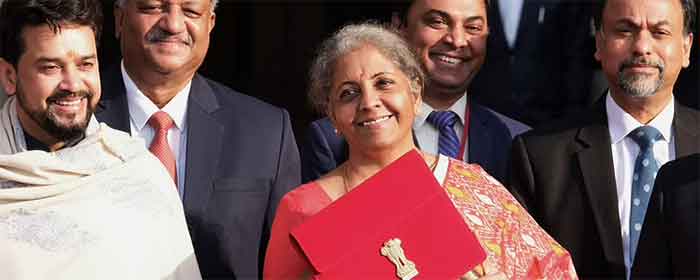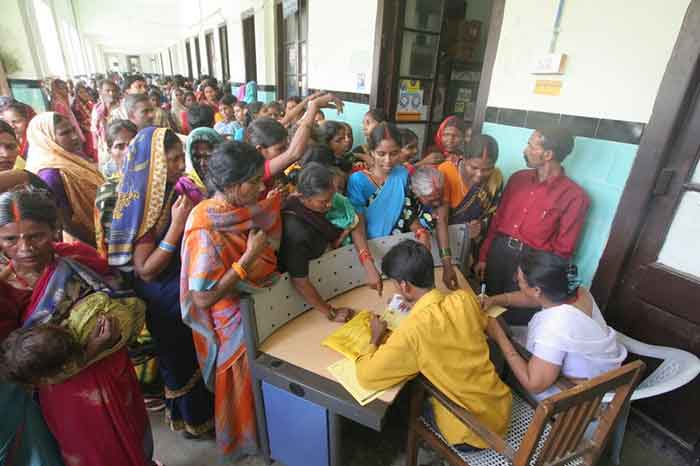
Many people wait eagerly for budgets of the governments at union and state levels, but frequently also complain that the information they receive from various sources is confusing and sometimes even contradictory. Why does this happen?
This question can be answered to a significant extent by considering a very simple example. Let us assume that there is a scheme for welfare of construction workers which originally received an allocation for Rs. 100 crore in 2010-11 (often called budget estimate or B.E) which was later cut to Rs. 75 crore when the revised estimate (RE) was prepared later in the year. Now let us assume that an allocation of Rs. 85 crore (BE) was made next year ie in 2011-12.
So some sections of the media who want to give a positive view can compare this with the RE of the previous year and say that there is a rise of INR 10 crore, while others can compare with the BE of the previous year and say that there is a decline of INR 15 crore. Both can give their reasons for the kind of comparison they have chosen, but often they do not go into so many details. Hence the worker who is keen to know the reality and makes considerable effort to follow these two media sources gets confused by these two different reports, one of an increase and the other of a decrease!
The reality is that there was a cut previous year in the RE and comparing the two BEs there is a reduction this year too, but this is not often presented in a clear way.
Now let us consider real-life data for rural employment scheme under MG-NREGA for recent times. Last year the original allocation for this was INR 60000 crore but later this BE was increased to RE of INR 86,000 crore. The BE for 2024-25 is also INR 86,000 crore. So what anyone supportive of this can say is that last year RE was higher than BE and this year the BE is higher than the BE of the previous year, hence scoring on both points. However it is the critics who are on a more solid ground when they assert that all these three figures are much below the requirements of the employment guarantee scheme, calculated on the basis of 100 day employment and wage of the number of people who have job cards and are known to seek employment on the basis of the previous data. The critics can also go back to the actual expenditure of INR 98467 crore in 2021-22 to reveal a decline trend in real as well as nominal terms. In fact in real terms a decline can be shown even when comparing the RE and the BE for the two latest years– same in money terms but a decline in real terms.
Budget analysis can be a very useful exercise as the mass of statistics and information contained in the budget can be examined in terms of what is most important for people and to what extent the needs and priorities of ordinary people have been fulfilled, with special emphasis on the needs and priorities of the weaker and more vulnerable sections.
Such analysis can be also very useful from several other perspectives such as gender, childhood, rural development and environment protection. From the basic budget document one may get a figure for various rural development schemes but these figures may not mean much to many people by themselves. However budget analysis brings together various rural development schemes which may be spread over several ministries, compares the current allocations with previous allocations and actual spending as well with actual needs based on several indicators. With this additional information provided by budget analysis, the budget figures become much more meaningful and people understand their implications. People also find it very useful to know whether the original allocations were cut or increased later, and what was the extent of fund utilization.
While the importance of such analysis and understanding is quite obvious, we must also be aware of some pitfalls. Let us imagine a situation where allocation for agriculture increases suddenly in a significant way, but this allocation is highly biased in favor of corporate led, ecologically disruptive growth and against small farmer led, ecologically protective growth. In such a situation we cannot say that the increased allocation means the betterment of farmers. Instead we need to voice the high risks and adverse impacts of such a pattern of agricultural development. Clearly in such cases we need to look at not just the amount of allocation but also the several details of the pattern of allocation and spending. When the government may be facilitating the increasing corporate control over farming we cannot praise government farm policy just because allocations for agriculture have increased.
The need for increasing the budget allocations for education and health in India has been repeatedly emphasized, and there is no doubt that this is badly needed. However at the same time we should note that in these two sectors the need for avoiding high profiteering is the most acute and yet at the same time big profiteers are increasingly dominating both these sectors. So it is possible that certain increases in budget allocations may just be gobbled by these profiteers with very few genuine benefits reaching ordinary people and weaker sections. Hence it is important to look in more detail at how exactly any increased allocations are being used.
A particularly important aspect is to know the extent to which the poorest sections of society are benefited in sustainable ways by various budget allocations. In particular it is very important to know to what extent and in what ways budgetary allocations are likely to benefit landless farm workers in villages and informal sector workers in cities.
However in order to provide such detailed and relevant budget analysis, access to detailed information at the right time is needed. To give an example, access to information regarding budgetary cuts at the time when revised estimates are prepared is very important, but generally in a credible way such information becomes available to people much after the cuts have been made when it has limited usefulness. Hence there is clearly need for the government to be much more transparent in such matters and release information at a more early stage.
A very large number of people listen to the budget speech and to the analysis which follows immediately on TV channels, which in turn is much influenced by the budget speech. Therefore there is a clear need for the budget speech to include several more important facts about the budget.
While there is definite scope for budget analysis to make a much more important contribution to people’s understanding as well as policy, at the same time the fact remains that a lot of budget analysis is based on protecting the interests of important and influential elite groups and hence may be reflecting such concerns and not those of ordinary people and weaker sections. Hence special efforts should be made to ensure that budget analysis based on concerns of weaker sections as well as other priorities such as environment protection can have a stronger base and a wider reach.
Bharat Dogra is Honorary Convener, Campaign to Save Earth now. His recent books include Planet in Peril, Man over Machine and A Day in 2071.
















































